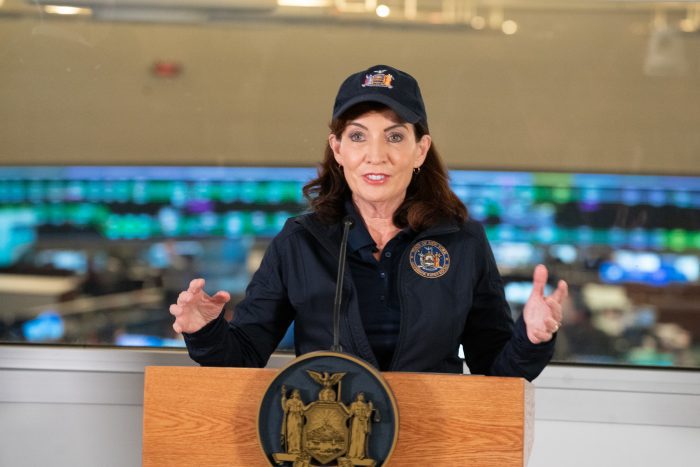By Steven Zaitz
A soggy day got even soggier for the Northport Lady Tiger soccer team, as it dropped a 2-0 decision to its top-of-the-table rival and reigning New York State champion Ward Melville this past Saturday.
The Lady Patriots scored one very early and another very late to secure the win and, in between, used a suffocating brand of defense that allowed Northport nary a chance to even sniff a scoring opportunity. This was an especially impressive feat by Ward Melville, considering Northport had obliterated Walt Whitman two days earlier, 7-0.
Lady Pat senior Peyton Costello scored on a penalty kick in the 16th minute of the game, her eighth goal of the year, and freshman Aliyah Leonard knocked in a header off a gorgeous centering pass from Marissa Tonic with 13 minutes remaining for the knockout punch. Leonard was able to get a large piece of not only the ball, but Tiger goalkeeper Kaleigh Howard’s arm, as Howard was rising up to catch Tonic’s curving crosser. Howard never gained control and the ball squirted free and over the goal line.
The Lady Patriot defense did the rest. Fullbacks and sisters Adriana and Ale’ Victoriano were twin terrors on the backline with Sarah Jablonsky, Samantha Ruffini and Tonic at center midfield. The Patriots forced Tiger stars Madison Howard, Jamie Inzerillo and Brooke Heffernan into slippery decisions and often missed connections as Ward Melville goalkeeper Kate Ronzoni had a reasonably easy day at the office.
Northport had outscored its previous five opponents by a combined 21-2. Saturday in Setauket, however, was a different story for the Lady Tigers as they mustered only two shots at Ronzoni’s net.
For the Patriots, it’s business as usual. Only one team scored against them all season and it was non-league Syosset. Ward Melville won that game anyway 7-2. So far this season, nine other teams have tried and failed to slip one past Ronzoni — including Northport.
“Our team is a mix of such good players from different club teams in Suffolk,” senior captain Tonic said. “Everyone works so well together, and we have such a great defensive shape.”
Ward Melville remains undefeated at 9-0-1 and has used that defensive shape to achieve a goal differential of 32-2 this year. Northport falls to 7-2-2.
The game was played just hours after historic amounts of rain fell across Long Island and while the rain had tapered off considerably at game time, it was still played under slick conditions. Northport wasn’t using it as an excuse.
“Ward Melville has a very strong defense,” said junior captain and striker Madison Howard, who is Kaleigh’s sister. “I think we came out a little tentatively because there was a lot of hype surrounding this game. But if and when we see them again in the playoffs, we’ll know what to do.”
With their unblemished 8-0 record in Suffolk Division I, Ward Melville has a simple focus — repeat as state champs.
“We have a completely different team now than we had last year,” Costello said. “We are very young but still very hungry to win it all again.”
Northport, also with lofty aspirations, is now a respectable 6-2-1 in the division and currently seeded fifth. The top two teams in the conference will earn a bye in the first round of the playoffs. The victory by Ward Melville was a big step toward that pot of gold, but Northport is not done chasing that rainbow.
“We always try to stay positive,” Madison Howard said. “We will win as many games as we can and see where we end up.”
With opponents including Connetquot and Commack in the coming days, the Lady Tigers hope to crank up the machine again and render this loss a wet and wild one-off.
Ward Melville intends to keep the good times rolling with upcoming games against Bay Shore, Connetquot and Walt Whitman.




















